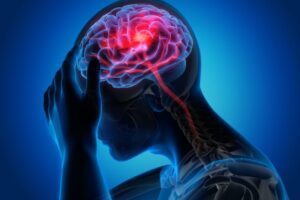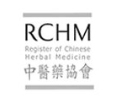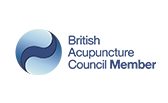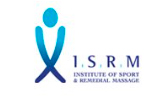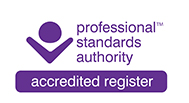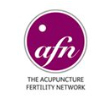Types of Headaches
Types of Headaches and How Acupuncture & Myofascial Release Can Help
Headaches are common and can manifest as pain, tenderness, or a dull ache in the head. There are various types of headaches, each with unique symptoms, severity levels, and treatment options. Clinically it is seen that many types of headaches are due to, or influenced by muscle tension and trigger point activity in the neck and shoulders, even when they have been diagnosed as migraine etc.
Tension Headache
Tension headaches are among the most common headaches, often triggered by stress. They typically cause a dull, aching sensation throughout the head and may be accompanied by muscle tightness in the neck, forehead, and shoulders. While over-the-counter (OTC) pain relievers can provide relief, acupuncture and myofascial release therapy can be highly effective in reducing muscle tension and improving circulation, helping to prevent recurring tension headaches.
2. Sinus Headaches
Sinus headaches occur due to inflammation in the sinus cavities, often caused by allergies, illness, or dry weather. They cause deep, persistent pain in the forehead, cheekbones, or bridge of the nose and may worsen with sudden head movements.
Acupuncture can help relieve sinus pressure by improving circulation and reducing inflammation, as well as regulating the immune system, promoting sinus drainage. These therapies can work alongside decongestants and antihistamines to provide relief, or replace the need for them over time.
3. Exertion Headaches
Exertion headaches can develop immediately after intense physical activity, such as running, weightlifting, or sexual activity. These short-lived, throbbing headaches can occur on both sides of the head.
Acupuncture may help regulate blood flow and prevent sudden vascular changes that contribute to exertion headaches, while myofascial release can reduce muscular strain that might trigger them.
4. Migraines
For 12% of Americans, migraines cause debilitating pain that disrupts daily life. Migraines are associated with blood vessel contractions and other neurological changes and can be triggered by stress, environmental factors, or sleep deprivation. Symptoms may include throbbing pain, nausea, dizziness, and sensitivity to light, noise, or smells.
Acupuncture has been shown to help regulate neurotransmitters and reduce migraine frequency, while myofascial release can relieve trigger points that contribute to tension in the head and neck, helping to alleviate symptoms.
Vestibular migraines are a subtype of migraines that involve dizziness, vertigo, and balance issues rather than severe head pain. These episodes can be triggered by motion, stress, or certain foods and may last for minutes to hours. Acupuncture can help regulate the nervous system and improve inner ear function, while myofascial release can reduce tension in the neck and upper back, which may contribute to vestibular symptoms.
5. Hormone Headaches
Hormonal fluctuations due to menstruation, pregnancy, menopause, or contraceptives can lead to headaches. It is estimated that 60% of women with migraines experience menstrual migraines.
Acupuncture is known to balance hormonal fluctuations, reducing the severity and frequency of hormone-related headaches. Myofascial release can help improve circulation and decrease tension that may exacerbate these headaches.
6. Cluster Headache
Cluster headaches are rare but extremely painful, causing burning or piercing pain around one eye or side of the face. These headaches often come with symptoms like facial swelling, nasal congestion, and eye tearing.
Acupuncture may help by modulating pain signals and improving circulation, potentially reducing the intensity of cluster headaches. Myofascial release can ease muscular tension in the face and neck, which may contribute to discomfort.
7. Hypertension Headaches
Hypertension headaches occur when blood pressure becomes critically high (over 180/110) and may be accompanied by vision changes, chest pain, or shortness of breath. This type of headache requires immediate medical attention.
Acupuncture has been shown to help regulate blood pressure, potentially reducing the risk of hypertension headaches over time. Myofascial release can complement this by promoting relaxation and decreasing muscular tension, which can contribute to high blood pressure.
8. Cervicogenic Headache
Cervicogenic headaches originate from issues in the neck, such as muscle tension, joint dysfunction, or nerve compression. These headaches often present as a persistent, unilateral pain that starts in the neck and radiates to the head, sometimes accompanied by reduced neck mobility.
Acupuncture can help alleviate cervicogenic headaches by reducing inflammation and restoring balance in the nervous system, while myofascial release targets muscle tightness and trigger points in the neck and upper back. These therapies work together to relieve pain and improve mobility, addressing the root cause of cervicogenic headaches.
The hidden causes of many of these types of headache often stems from body use habits and posture. As part of the treatment process we include education on how better to accomplish what you need to without causing more issues, as well as self help techniques, stretches and exercises.
When to Seek Medical Attention
Many headaches are episodic and resolve within a day. However, if your headache lasts more than two days, increases in intensity, or occurs regularly, consult a doctor. Acupuncture and myofascial release can be excellent complementary treatments to traditional headache management, helping to address both the symptoms and underlying causes of different headache types.
However some causes of headache are serious and require urgent medical attention. If you experience a headache with sudden onset accompanied by convulsions, nausea/ vomiting, loss of consciousness, or sensation, you should seek emergency care.

